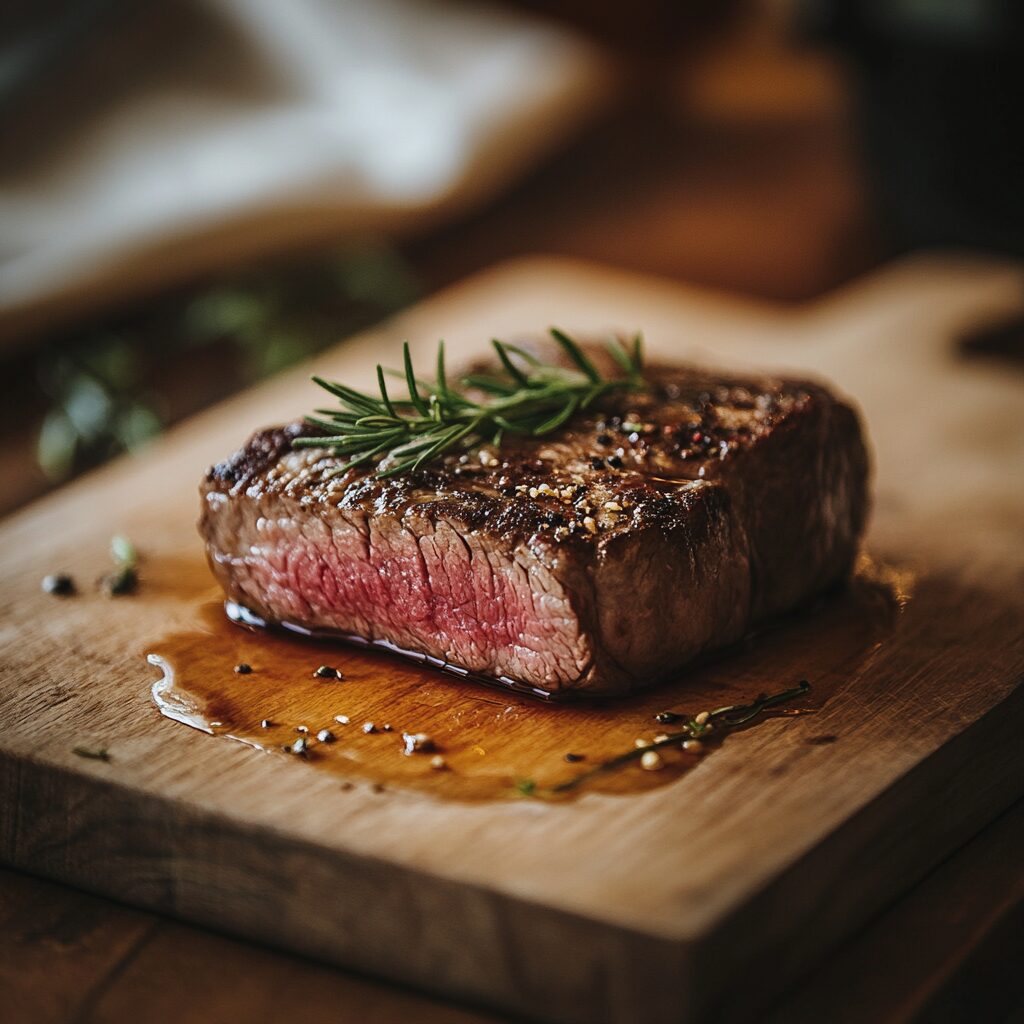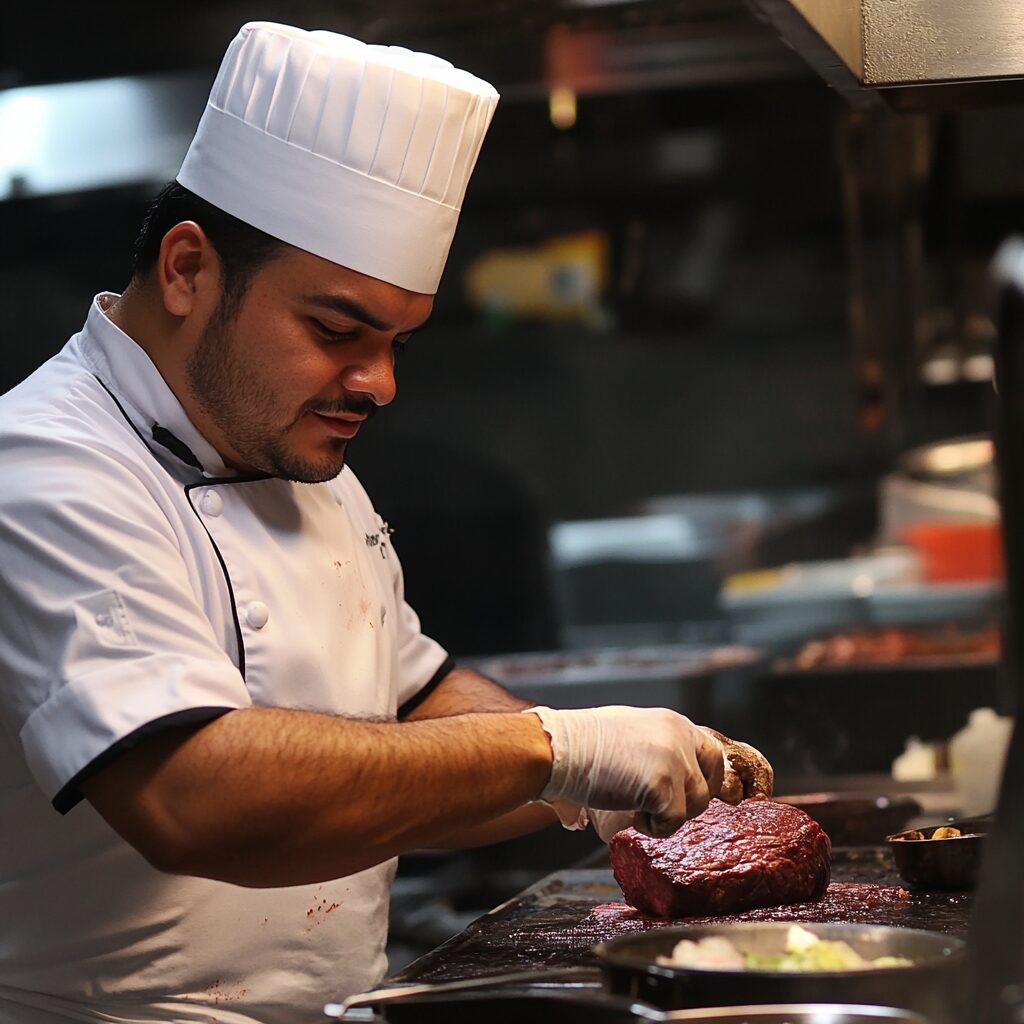The difference between a perfectly cooked piece of meat and a tough, dry disappointment often comes down to a few key techniques. Top chefs agree that most home cooks make several common mistakes that prevent them from achieving restaurant-quality results. Here’s what you’re doing wrong – and how to fix it.
You’re not using a meat thermometer

The most crucial tool for perfect meat isn’t an expensive pan or premium seasoning – it’s a simple meat thermometer. The USDA recommends specific internal temperatures for different types of meat: 145°F for whole cuts of beef, pork, and lamb, followed by a three-minute rest period.
Professional chefs emphasize that relying on touch or appearance alone isn’t reliable. A thermometer inserted into the thickest part of the meat, avoiding fat or bone, is the only way to ensure food safety while preventing overcooking.
Many home cooks resist using thermometers, believing they’ll release too many juices. This concern is unfounded – the tiny puncture has minimal impact on the meat’s moisture content.
Starting with wet meat ruins the sear
Moisture is the enemy of a good sear. A proper crust requires completely dry meat before it hits the hot surface. Pat the meat thoroughly with paper towels before seasoning.
Surface moisture steams rather than sears, preventing the desirable Maillard reaction that creates rich, complex flavors. This mistake often results in gray, unappetizing meat instead of a rich, brown crust.
Some marinades can be beneficial, but they should be patted dry before cooking. The flavors will remain while allowing proper browning to occur.
Your pan isn’t hot enough

Professional kitchens use extremely high heat for a reason. A properly heated pan should be hot enough to create immediate sizzling when the meat makes contact.
Cast iron pans are ideal for achieving and maintaining the necessary temperature. They retain heat better than standard cookware and create an even cooking surface.
Wait until you see wisps of smoke rising from your oiled pan before adding the meat. This ensures proper searing and prevents the meat from steaming in its own juices.
Overcrowding the pan prevents proper browning
Each piece of meat needs adequate space in the pan. Overcrowding leads to temperature drops and trapped moisture, resulting in steamed rather than seared meat.
Work in batches if necessary, keeping cooked pieces warm in a low-temperature oven. The extra time is worth it for properly browned, flavorful results.
Remember that meat releases moisture as it cooks. Without proper spacing, this moisture becomes trapped and prevents the development of a proper crust.
Not resting meat after cooking

Resting periods are non-negotiable for juicy meat. The process allows internal temperatures to stabilize and juices to redistribute throughout the meat.
The right resting time varies by size. Small cuts need 5-10 minutes, while larger roasts require 15-20 minutes. Place the meat on a warm plate and tent loosely with foil.
During the rest period, the meat’s internal temperature remains constant or slightly increases, contributing to food safety while maintaining moisture.
Improper defrosting compromises safety
Safe defrosting requires planning. Never thaw meat on the counter at room temperature, which promotes bacterial growth in the “danger zone” temperature range.
Thaw meat in the refrigerator, allowing 24 hours for every 2.5kg/5lbs. For faster results, use the cold water method, submerging sealed meat in cold water and changing the water every 30 minutes.
Once thawed, cook the meat within 24 hours. Never refreeze raw meat that has been completely thawed.
Cross contamination risks food safety
Maintain separate cutting boards for raw meat and other ingredients. Wash hands thoroughly after handling raw meat, and sanitize all surfaces and utensils that contact raw meat.
Replace worn cutting boards, as bacteria can hide in knife scratches and grooves. Consider color-coding boards to prevent accidental cross-use.
Use different plates and utensils for raw and cooked meat. Never place cooked meat on surfaces that held raw meat without proper cleaning.
Using the wrong cut for your cooking method
Each cut of meat has an ideal cooking method. Tough cuts with connective tissue require slow cooking, while tender cuts suit quick, high-heat methods.
Cuts like chuck and brisket transform through slow cooking, which breaks down tough fibers. Premium steaks like ribeye and filet mignon need only quick searing to maintain their natural tenderness.
Regional variations exist in cut names and traditional preparations. What works for tri-tip in California might differ from sirloin tip preparation in Massachusetts.
Understanding these fundamental principles transforms home cooking results. Professional chefs master these techniques through years of experience, but home cooks can achieve similar results by avoiding these common mistakes. Remember that perfection comes through practice and attention to detail. Start with quality ingredients, use the right tools and techniques, and maintain proper food safety practices throughout the cooking process.

